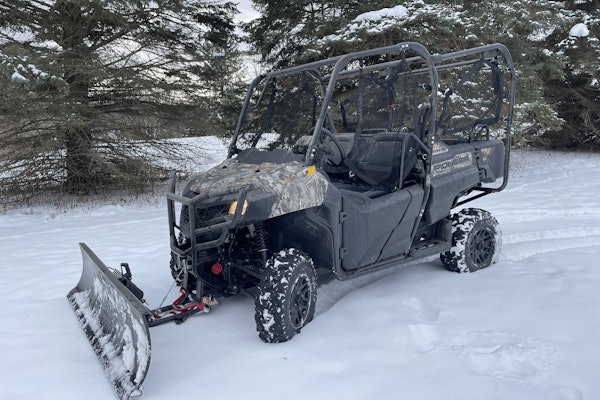It seems wise for even construction workers to stay indoors this week, especially during the hottest hours of the day — between 11 a.m. and 4 p.m.
The National Weather Service has issued excessive heat warnings and advisories from Illinois to Louisiana and from Nebraska to the District of Columbia. Phoenix saw 116 degrees last week; Yuma, Ariz., hit 117 degrees and St. Louis, Wichita, Kan., and Las Vegas have hit record highs above 110 degrees.
“Construction workers who have been out there for awhile may not be able to handle the heat anymore,” said Dan Burazin, safety director at the Greater Milwaukee Chapter of the Associated Builders and Contractors of America. “Contractors who know the signs of heat exhaustion and heat stroke need to keep an eye on these workers.”
Twenty-eight people in the United States have died from heat-related illness in the past two weeks and at least one construction worker has died and three others have suffered illnesses or injuries as a result of soaring temperatures.
Dennis Thompson, who has been a construction worker for 25 years, nearly died from a heat stroke while installing fences in Fridley, Minn., when his bodily temperature reached 108.8 degrees July 15. Only once in his entire career did he have to go inside because of the the heat. He continued working July 15 after his legs started to shake. A co-worker called an ambulance.
William Kollmar, 42, fell 20 feet onto cement – possibly due to the heat – while applying tarpaper to a school roof in Woodbridge, N.J. He is in critical condition. Kevin Jennings, 34, is in “guarded” condition in Council Bluffs, Iowa, after an apparent heat stroke on the job July 14. Another construction worker died of a heat stroke in Niagara County, N.Y., July 14.
According to the American Academy of Family Physicians, outdoor laborers account for the largest percentage of heat-related illnesses. Signs and symptoms of heat exhaustion and heat stroke include anxiety, vomiting, seizures, confusion and headaches.
“There should be some kind of safe haven, like an air-conditioned trailer, that these workers can go take a break in and stay hydrated,” Burazin said. “A lot of contractors don’t like their workers taking a bunch of breaks, but it’s better the workers are hydrated than not there at all. In the Southwest, some contractors are starting earlier to take advantage of the cooler hours of the day.”
Based on the region, Burazin said a contractor should postpone work at certain temperature ranges. He said contractors in his area start taking precautions when average temperatures reach the 90-degree range.
“That’s about the time we start thinking about whether we should change up some things or come back later to a job,” he said.
An OSHA fact sheet suggests the following heat precautions for outside workers:
· Eat smaller meals
· Avoid caffeine, alcohol and large amounts of sugar
· Take short, frequent breaks
· Wear breathable clothing like cotton
· Learn what medications don’t mix with the heat
· Avoid work suits
· Avoid equipment like respirators (they contribute to heat stress)
· Drink plenty of water
A few thunderstorms at the end of this week should reduce temperatures in the West to the 90-degree range, and a cold front should move across the mid-South and North Wednesday, according to NWS.
You can reach Ebony Horton at [email protected]









